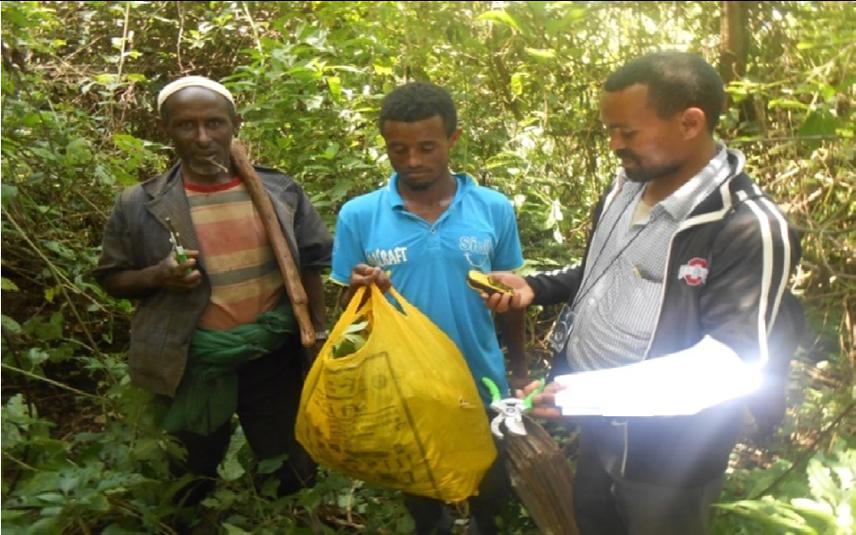Haimanot Reta Terefe
The aim of this study will be documenting and analyzing plant diversity with high emphasis given to wild edible plants in the remaining forest patches along Temcha River watershed with the prospect to the on-going integrated watershed management.

Wild edible plant specimen collection for identification
Due to diverse climatic conditions and high physiographic variability, Ethiopia is endowed with more than 6, 000 higher plant species in different vegetation types with 10–12% endemism (Hedberg, 2009) and currently the plants become highly threated by anthropogenic pressure. Ethnobotanical studies in Ethiopia in relation to wild edible plants were only covers 5% of the total district in Ethiopia (Ermias et al, 2011). Inspite of the above mentioned limitation, wild edible plants have been facing multiple chalenges. 1) Cleaered along with the forest i.e., the annual deforestation in Ethiopia from 1990 -2010 year indicated that a total of 141, 000 hectares of forest per year were lost even though there are remaining patches of forests that contain wild edible plants today. 2) Its economic value was excluded from official statistics. 3) Nutritional transition associated with industrialization and the modernization of diet, and with high emphasis given to cultivated crops lead to the neglecting of its ecological provisioning services with supporting local knowledge system that sustain wild edible plants. Therefore, studying wild edible plants to get the full benefit out of it and to solve ecological and nutrational problems before being extinct from the ecosystem is the main target of this study. Eventually the patch forest containing large number of culturally very important wild edible plants will get high priority for conservation.
For ethnobotanical study, data will be gathered by interviewing 384 informants determined by using single population proportion formula from the selected peasant associations in watershed residents. Comprehensive information will be Congregated through semi structured interview, free list, focus group discussion (FGD), participant observation and walk-in-the woods as described by Martin (1995) and Cotton (1996). Quantitative approaches will be used to determine use value (UV), Rank Order Priority (ROP), cultural significance index (CSI) and ethnoecological importance value index (EVI) of wild edible plants. The nutritional and antinutritional value of the most culturally important wild edible plants will be analysed following standard methods.
In this study Multipurpose wild edible plants and having the highest cultural significant in the community will be identified. The wild edible plants having reasonable amount of food value after nutritional analysis will be selected and will be incorporated in the national food basket. Wild edible plant density maps of the study sites will be produced at the end of the project that will assist relevant institutions in establishing appropriate conservation measures. The local communities will benefit from the project by working as field assistants, key informants, guides, guards and daily laborers during the project and will be implementers and ultimate beneficiaries following the completion of the work. In the near future, the identified wild edible plants should be used for integrated watershed management or integrated landscape management to implement climate smart agriculture.